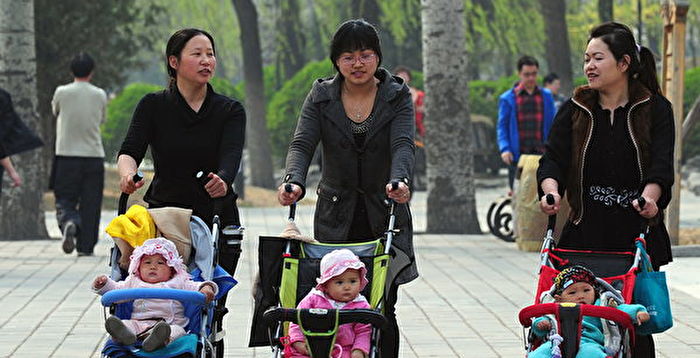[Epoch Times December 24, 2021](Reported by Epoch Times reporter Li Yun) Recently, China’s Jilin Province introduced a new policy to provide married couples with up to 200,000 yuan in maternity loans. Netizens ridiculed one-sided ridicule, calling it “the loan is passed on from one family to another, and the loan is passed on from one generation to another.” Many people also questioned, “Don’t you need to repay the loan?”
According to the news of the Chinese Communist Party’s Jilin Provincial Government Network on December 23, the Jilin Provincial Party Committee and others have recently issued a plan to provide up to 200,000 yuan in marriage and childbirth consumer loans for couples who have one, two, and three children, and provide different levels of interest rate reductions. measure.
As soon as this “childbirth loan” policy was released, it was immediately ranked first in the top searches on Weibo, with more than 6.6 million views.
Many netizens mocked:
“According to the family, the loan has been passed down. Other people’s children were born with a golden spoon, and their children were born with an IOU. Later, the child will be called Xiongdaizhi. If you are done with it.”
“Mortgage loans for mortgages and car loans are passed on from family to family. Loans are passed on from generation to generation. Loans are passed on from generation to generation. If future family heirlooms are IOUs, I suggest another cemetery loan.”
“The loan has been passed down, and the family will accept the loan. Can the child be mortgaged to the bank at that time? After all, it is a loan of 200,000 to be born.”
Many netizens also said: “I still want to lend…wait for negative growth!” “You have to borrow money to give birth to a baby. What is the meaning of giving birth to a baby?”
 (Screenshot of Weibo)
(Screenshot of Weibo)
One of the online posts of “No need to repay the loan? Go!”, there were 1,318 replies with more than 49,000 hits.
Netizens said: “Now that I can’t afford to pay off the mortgage, I want to lie to me for a loan of 200,000 yuan???? Are young people really fools?” “It not only wants us to have more babies, but also wants to earn interest through finance. Shameless!” “I don’t want to get married without giving away 200,000 yuan, and repay the loan! Don’t you need to pay it back?!”

The CCP began to implement the one-child family planning policy in the late 1970s, which caused the imbalance of the population and the aging of the population to become more and more serious.
Statistics show that since the 1990s, the number of births in China has shown a downward trend, from more than 20 million per year to less than 16 million in 2003. In 2016, the CCP announced the liberalization of the “two-child” policy. However, the birth rate of newborns in China has continued to decline year after year. In 2016, the number of births was 17.86 million; in 2020, it was only 12 million.
On May 31 this year, the Politburo of the Communist Party of China held a meeting to announce the implementation of the “three-child policy.” Subsequently, various localities introduced a variety of measures to encourage childbirth and release three births, but the effect was not obvious.
According to statistics released by the Civil Affairs Department of the Communist Party of China in August, there are currently about 170 million “post-90s” younger generations. The marriage rate is only 10%, but the divorce rate is as high as 35%. A report issued by the Chinese Academy of Social Sciences in 2019 predicts that the negative population growth will be the fastest in 2017 and will reduce the population by 200 million by 2050.
Editor in charge: Li Muen
.
